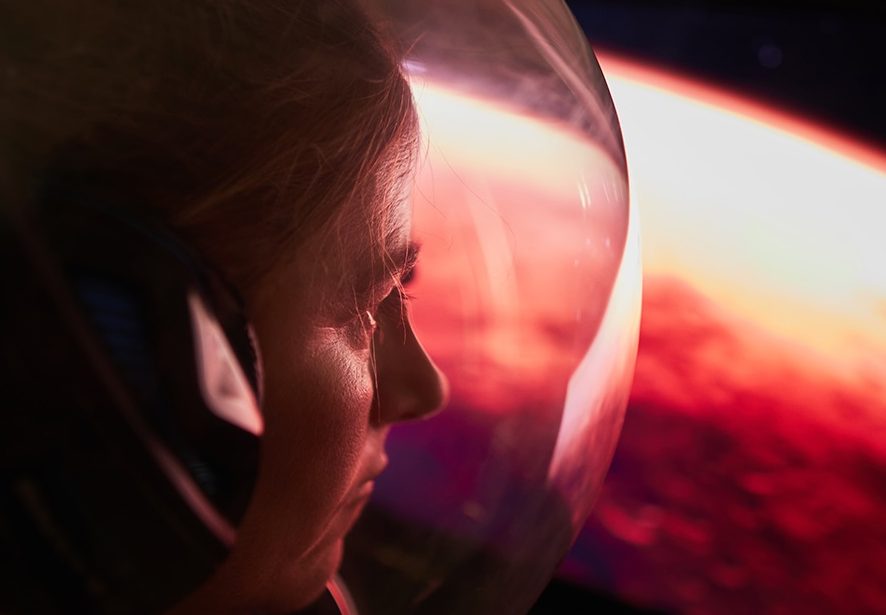Just as extreme altitudes have notable effects on the human body and mind, so too does extreme wealth seem to have a particular effect on psychology. Or at least that’s how it appears when you look at the shared ambition of two of the world’s most prominent billionaires, Elon Musk and Jeff Bezos. Both men are fixated on the idea that humanity’s future lies beyond Earth and are funneling fortunes into the vision that we will soon have significant human settlements off-planet, whether on the moon, Mars or elsewhere. It’s an argument grounded not just in exploration and discovery, but in survival. If humanity’s future on Earth looks to be in doubt, is living off-world not the ultimate insurance policy for our species?
A City on Mars, written by the science writing wife-and-husband team of Kelly and Zach Weinersmith, answers this question very bluntly: don’t pin your hopes on it. The book doesn’t occupy itself too much with the wishes of particular billionaires — except as recurring comical asides — but concentrates instead on the much weightier question of what off-world living might actually look like.
The picture is quite bleak. Space is dark, mostly cold, but in places extremely hot, empty, poisonous and radioactive — the absolute opposite of anything you might hope for in a holiday brochure. There’s also not much in the way of economic prospects out there. Mining might be possible, but moving things in space is extremely expensive, and neither the moon nor Mars show much evidence of valuable minerals anyway. The idea of huge, glass-domed space bases is out. Instead, a real base would likely be an airlocked, underground, claustrophobic affair, with most of the room given over to vast, artificially-lit greenhouses producing subsistence food and oxygen.
The book doesn’t stop at the scientific — though it does cover this extremely well. The Weinersmiths have read hundreds of serious peer-reviewed papers, interviewed their authors and found out what they can. But they have also talked to lawyers, psychologists and economists. Space society isn’t simply about what is technically possible, but how it would work in practice. Utopian visions of space do not tend to survive contact with human nature and looking at the existing law governing space leaves little space for optimism.
The authors warn against the idea of going to the stars (or at least nearby planets) as a solution to the problems we have on Earth. As they note, Antarctica is infinitely preferable as a place to live than either the moon or Mars, yet there is little in the way of political movements saying we should move there en masse. The technology that would make space liveable would benefit us much more on Earth, too. Going off-planet is not a fix for climate change or nuclear winter.
All this makes the book sound a much grimmer read than it is. It is peppered with cartoons and jokey back-references, and between each section are interludes tackling some enjoyable anecdotes from space. One concerns a popular tale of NASA obliviousness: mission specialists packed a bandolier of 100 or more tampons for a female astronaut’s short space walk — far more, she said, than she’d need. The Weinersmiths reveal that there might be more to the story than we’d thought.
Many of us look to the skies and dream of a future for humanity there, and the Weinersmiths don’t say it’s impossible. But the scientific, political, economic and other drivers all indicate: go big or stay home. Trying to make a self-sustaining off-world society wouldn’t come from 100, 500 or even 10,000 early settlers. Bases of that size would only be good for research for future large-scale societies, and would be hugely reliant on resources from Earth.
A sustainable off-world society would need to avoid collapsing into a corporatist dystopia, manufacturing everything needed for an Earth-like quality of life or descending into inbreeding within a few generations. The numbers required get very high indeed — something between 100 million and a billion. That’s not going to happen soon. But it could happen. The first step, though, would be to make sure we keep Earth going long enough to make it possible.
This article was originally published in The Spectator’s UK magazine. Subscribe to the World edition here.


























Leave a Reply